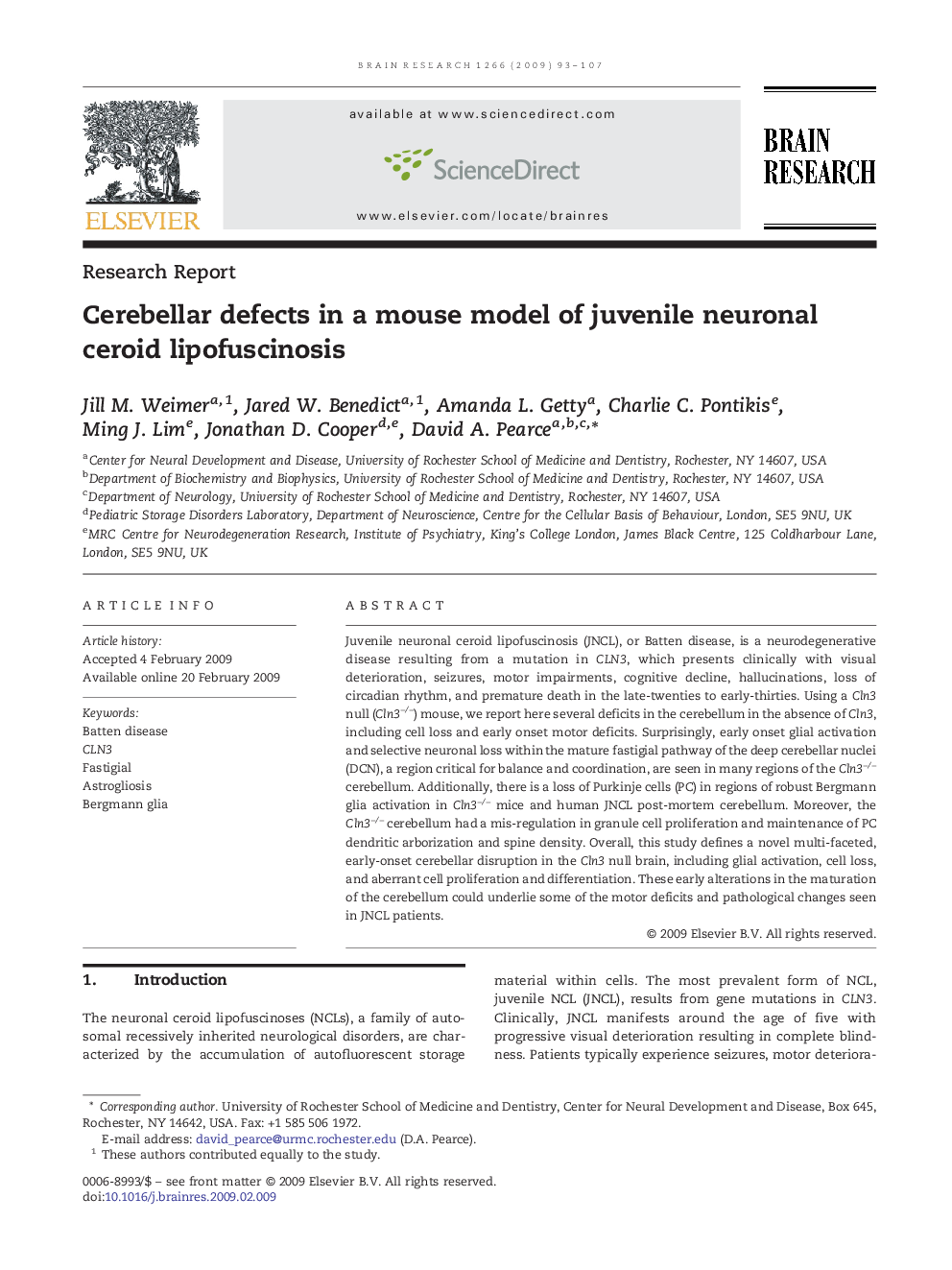| کد مقاله | کد نشریه | سال انتشار | مقاله انگلیسی | نسخه تمام متن |
|---|---|---|---|---|
| 4328355 | 1614173 | 2009 | 15 صفحه PDF | دانلود رایگان |

Juvenile neuronal ceroid lipofuscinosis (JNCL), or Batten disease, is a neurodegenerative disease resulting from a mutation in CLN3, which presents clinically with visual deterioration, seizures, motor impairments, cognitive decline, hallucinations, loss of circadian rhythm, and premature death in the late-twenties to early-thirties. Using a Cln3 null (Cln3−/−) mouse, we report here several deficits in the cerebellum in the absence of Cln3, including cell loss and early onset motor deficits. Surprisingly, early onset glial activation and selective neuronal loss within the mature fastigial pathway of the deep cerebellar nuclei (DCN), a region critical for balance and coordination, are seen in many regions of the Cln3−/− cerebellum. Additionally, there is a loss of Purkinje cells (PC) in regions of robust Bergmann glia activation in Cln3−/− mice and human JNCL post-mortem cerebellum. Moreover, the Cln3−/− cerebellum had a mis-regulation in granule cell proliferation and maintenance of PC dendritic arborization and spine density. Overall, this study defines a novel multi-faceted, early-onset cerebellar disruption in the Cln3 null brain, including glial activation, cell loss, and aberrant cell proliferation and differentiation. These early alterations in the maturation of the cerebellum could underlie some of the motor deficits and pathological changes seen in JNCL patients.
Journal: Brain Research - Volume 1266, 17 April 2009, Pages 93–107